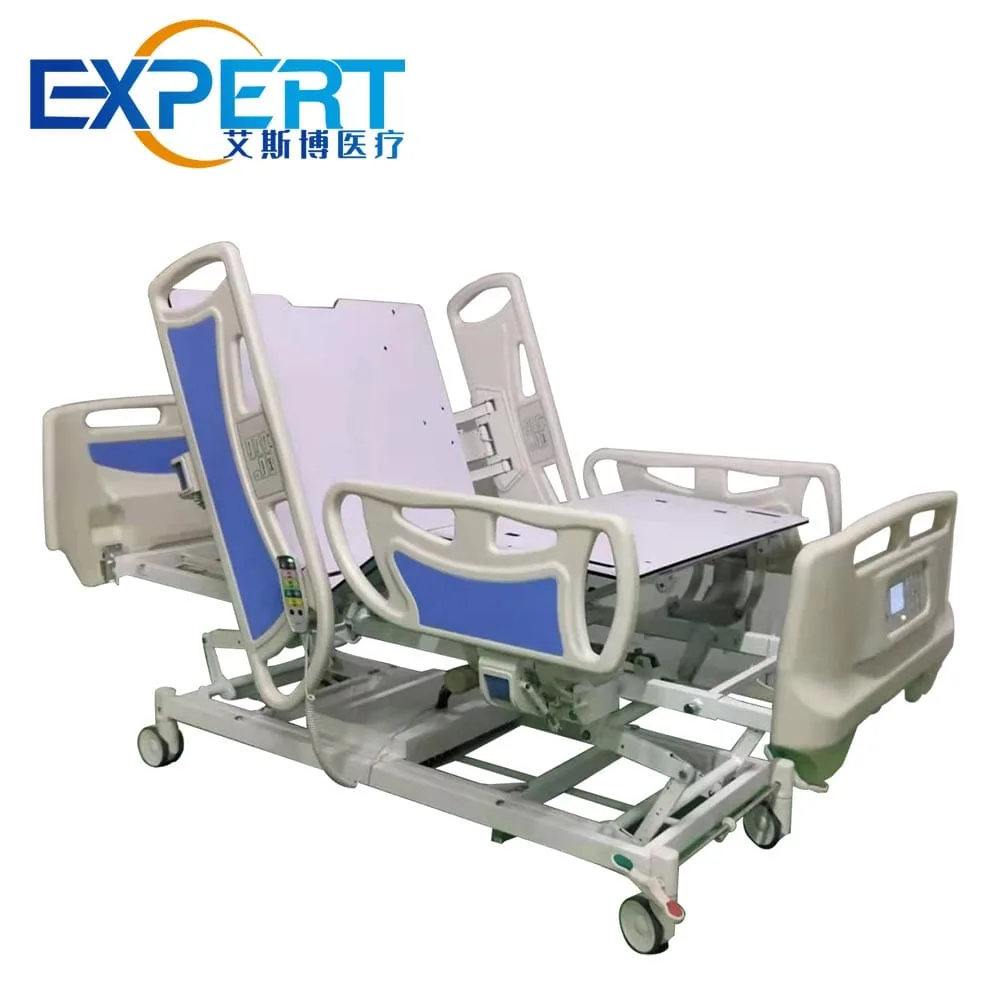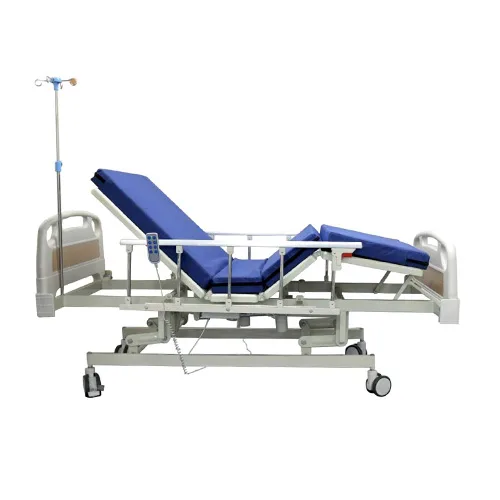Endereço
304 North Cardinal St.
Dorchester Center, MA 02124
Horas de trabalho
Segunda a sexta: 7h00 - 19h00
Fim de semana: 10h - 17h
Endereço
304 North Cardinal St.
Dorchester Center, MA 02124
Horas de trabalho
Segunda a sexta: 7h00 - 19h00
Fim de semana: 10h - 17h

When outfitting a healthcare facility, selecting the right mobility hospital bed is a critical decision that impacts patient care and operational costs.
Bem-vindo ao meu blog!
Antes de mergulharmos no conteúdo, adoraria que você se juntasse a mim nas minhas plataformas de mídia social, onde compartilho mais insights, interajo com a comunidade e posto atualizações. Veja como você pode se conectar comigo:
Facebook:https://www.facebook.com/profile.php?id=100071234835011
LinkedIn:https://www.linkedin.com/company/74943205/admin/dashboard/
YouTube:www.youtube.com/@shandongexpertmedicalequip4695
TikTok:www.tiktok.com/@expertmedical
Agora, vamos começar nossa jornada juntos. Espero que você ache o conteúdo aqui perspicaz, envolvente e valioso.

When outfitting a healthcare facility, selecting the right mobility hospital bed is a critical decision that impacts patient care, staff efficiency, and operational costs. These specialized beds are designed to enhance patient mobility, safety, and comfort while supporting the needs of caregivers in demanding environments like operating rooms (OR) and intensive care units (ICU). At Expert, a high-tech enterprise focused on developing, manufacturing, and selling OR and ICU equipment for global markets, we understand the importance of choosing equipment that meets stringent clinical standards. This guide provides a comprehensive overview of factors to consider when purchasing a mobility hospital bed, ensuring facilities make informed decisions tailored to their needs.
Mobility hospital beds are engineered to facilitate patient movement, reduce the risk of pressure injuries, and improve clinical workflows. Unlike standard hospital beds, these beds incorporate advanced features like adjustable height, lateral tilt, and integrated mobility aids, which are essential for patients with limited mobility. For facilities, investing in a high-quality mobility hospital bed translates to better patient outcomes, reduced caregiver strain, and long-term cost savings through durability and versatility.

When evaluating a mobility hospital bed, facilities should prioritize features that align with their clinical and operational goals. Here are the critical elements to consider:
A mobility hospital bed should offer extensive adjustability, including height, head, and foot positioning, to accommodate diverse patient needs. Ergonomic designs reduce physical strain on caregivers during patient transfers and repositioning, enhancing workplace safety.
Safety is paramount in healthcare settings. Look for beds with features like side rails, brake systems, and emergency stop functions. Advanced models may include sensors to detect patient movement, reducing fall risks.
Ensure the mobility hospital bed can support a range of patient weights, typically up to 500 pounds or more, to accommodate diverse populations. Durable materials, such as reinforced steel frames, ensure longevity and withstand rigorous daily use in high-traffic facilities.
Beds with removable components and easy-to-clean surfaces simplify infection control protocols. At Expert, our mobility hospital beds are designed with seamless surfaces and antimicrobial coatings to meet stringent hygiene standards.
A mobility hospital bed directly contributes to patient recovery by promoting comfort and independence. Adjustable features allow patients to reposition themselves, reducing the risk of bedsores and improving circulation. For ICU settings, where patients often require prolonged bed rest, these beds support therapeutic positioning, such as Trendelenburg or reverse Trendelenburg, to aid in respiratory and cardiovascular management. By prioritizing patient-centered design, facilities can improve satisfaction scores and clinical outcomes.
Budget constraints are a reality for most healthcare facilities, but investing in a mobility hospital bed should be viewed as a long-term strategy. While initial costs may be higher than standard beds, the reduction in patient complications, such as pressure ulcers or falls, and the decreased need for additional staff support can lead to significant savings. Facilities should also consider leasing options or bulk purchasing discounts, which Expert offers to global clients to make high-quality equipment more accessible.
A mobility hospital bed must integrate seamlessly with other equipment in the OR or ICU, such as patient monitoring systems, IV poles, and transfer devices. Compatibility with electronic medical record (EMR) systems is also a growing consideration, as smart beds can transmit data like patient weight or position changes directly to clinical records. Expert’s mobility hospital beds are designed with modular components to ensure interoperability with a wide range of medical devices.
The following table outlines essential specifications to compare when selecting a mobility hospital bed for your facility:
| Especificação | Descrição | Why It Matters |
|---|---|---|
| Capacidade de peso | Typically 400–600 lbs, depending on the model | Ensures safety for diverse patient populations |
| Height Adjustment Range | Minimum height: 12–18 inches; Maximum height: 30–36 inches | Facilitates safe patient transfers and caregiver ergonomics |
| Positioning Options | Head, foot, lateral tilt, Trendelenburg, and reverse Trendelenburg | Supports clinical needs and patient comfort |
| Fonte de energia | Electric with battery backup or manual options | Ensures functionality during power outages |
| Side Rail Design | Collapsible, lockable, and padded | Prevents falls while allowing easy access for caregivers |
| Mattress Compatibility | Supports pressure-relieving or bariatric mattresses | Enhances patient comfort and reduces pressure injury risk |
| Cleaning Requirements | Antimicrobial surfaces, removable components | Simplifies infection control and maintenance |
This table serves as a starting point for facilities to assess their needs and prioritize features when selecting a mobility hospital bed.

Introducing a new mobility hospital bed requires staff training to maximize its benefits. Caregivers should be trained on operating advanced features, such as electronic controls or tilt functions, to ensure safe and efficient use. Expert provides comprehensive training resources and support for facilities adopting our equipment, ensuring smooth integration into daily operations. Regular maintenance schedules should also be established to keep beds in optimal condition.
Healthcare facilities must ensure that any mobility hospital bed complies with local and international regulatory standards, such as FDA or CE certifications. These standards guarantee safety, performance, and quality. At Expert, our products undergo rigorous testing to meet global regulations, providing peace of mind for facilities serving diverse markets. Additionally, consider beds with eco-friendly materials to align with sustainability goals, an increasing priority in healthcare.
Every facility has unique requirements based on patient demographics and clinical specialties. For example, bariatric units may need mobility hospital beds with higher weight capacities, while pediatric wards require smaller, adjustable models. Expert offers customizable solutions, allowing facilities to tailor beds to specific needs, such as specialized mattresses or integrated mobility aids, ensuring optimal performance in any setting.

While cost is a significant factor, the long-term value of a durable, feature-rich mobility hospital bed outweighs short-term savings from lower-quality alternatives. High-quality beds reduce maintenance costs, enhance patient safety, and improve staff efficiency, contributing to a facility’s reputation for excellence. Expert’s global presence ensures reliable after-sales support, including spare parts and technical assistance, to maximize the lifespan of your investment.
Escolhendo o certo mobility hospital bed is a strategic decision that enhances patient care, streamlines operations, and supports long-term financial goals. By prioritizing features like adjustability, safety, and compatibility, facilities can invest in equipment that meets both current and future needs. At Expert, we’re committed to delivering high-quality OR and ICU solutions to facilities worldwide. Contate-nos today to explore our range of mobility hospital beds and find the perfect fit for your facility.
What is a mobility hospital bed?
A mobility hospital bed is a specialized medical bed designed to enhance patient movement, comfort, and safety while supporting caregiver efficiency in healthcare settings like ORs and ICUs.
Como é que um mobility hospital bed differ from a standard hospital bed?
Unlike standard beds, mobility hospital beds offer advanced features like lateral tilt, extensive adjustability, and integrated mobility aids to support patients with limited mobility and reduce caregiver strain.
Are mobility hospital beds easy to clean?
Yes, high-quality models, like those from Expert, feature antimicrobial surfaces and removable components to simplify infection control and maintenance.